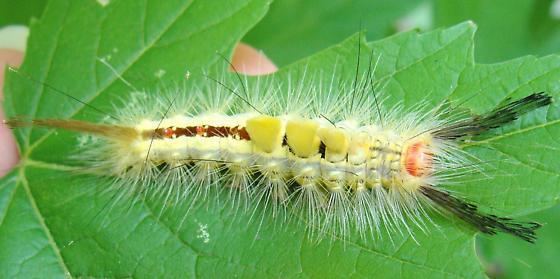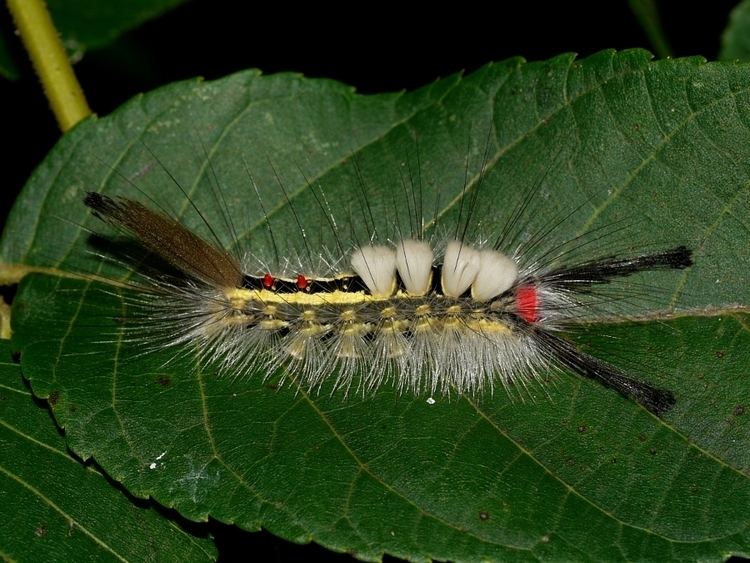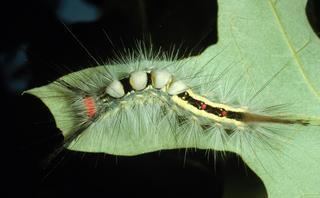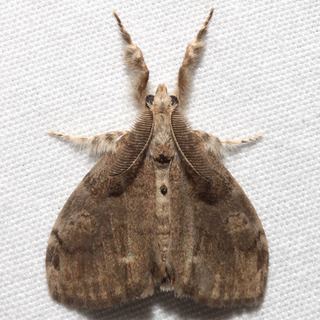Higher classification Orgyia | Family Lymantriidae Scientific name Orgyia leucostigma Rank Species | |
 | ||
Similar Lymantriinae, Orgyia, Butterflies and moths, Insect, Lophocampa caryae | ||
White marked tussock moth caterpillar orgyia leucostigma
The white-marked tussock moth (Orgyia leucostigma) is a moth in the family Lymantriidae. The caterpillar is very common especially in late summer in eastern North America, extending as far west as Texas, Colorado, and Alberta.
Contents
- White marked tussock moth caterpillar orgyia leucostigma
- Lifecycle
- Eggs
- Larvae
- Pupae
- Adults
- Host plants
- Ecology
- Subspecies
- References

Lifecycle
Two or more generations occur per year in eastern North America. They overwinter in the egg stage.
Eggs
Eggs are laid in a single mass over the cocoon of the female, and covered in a froth. Up to 300 eggs are laid at a time.
Larvae

The larvae are brightly coloured, with tufts of hair-like setae. The head is bright red and the body has yellow or white stripes, with a black stripe along the middle of the back. Bright red defensive glands are seen on the hind end of the back. Four white toothbrush-like tufts stand out from the back, and a grey-brown hair pencil is at the hind end. Touching the hairs sets off an allergic reaction in many humans. Young larvae skeletonize the surface of the leaf, while older larvae eat everything except the larger veins. They grow to about 35 mm long.
Pupae
The caterpillars spin a grayish cocoon in bark crevices and incorporate setae in it. The moths emerge after 2 weeks.
Adults

The females have reduced wings and do not leave the vicinity of the cocoon. The males are grey with wavy black lines and a white spot on the forewings (the vapourer, Orgyia antiqua, is similar but is a rusty colour.) The antennae are very feathery. Moths are found from June to October.
Host plants
The caterpillars may be found feeding on an extremely wide variety of trees, both deciduous and coniferous, including apple, birch, black locust, cherry, elm, fir, hackberry, hemlock, hickory, larch, oak, rose, spruce, chestnut, and willow. Defoliating outbreaks are occasionally reported especially on Manitoba maple and elm in urban areas. Outbreaks are usually ended by viral disease.
Ecology
The fungus Entomophaga maimaiga was introduced to North America to control the gypsy moth Lymantria dispar. The fungus also infects O. leucostigma and could possibly have an impact in years when E. maimaiga is abundant. Large larvae are mostly attacked by birds, and small larvae mostly disappear during dispersal.
